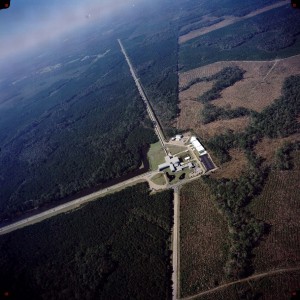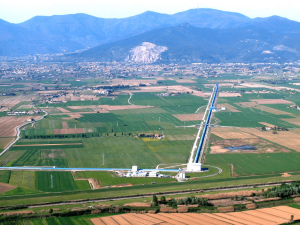
100 years ago, Albert Einstein published what is considered the foundational work of his theory of “General Relativity,” a scientific theory of space and time. Tomorrow, two large experiments and collaborations – LIGO and VIRGO – will present the status of their searches for one of the last undiscovered predictions of General Relativity: travelling distortions in spacetime called “gravitational waves.” Rumors are flying, hopes are high, and I am just waiting for their scientific papers.
Rumors have been circulating for weeks and weeks that one or both intends to release a publication and announce positive results in these searches. Having seen rumors propagate misleadingly the physics community over the years on subjects ranging from a direct detection of Dark Matter constituents to the nature and significance of the “di-photon bump” presented by the ATLAS and CMS Experiments in December, I am healthily skeptical of the rumors and more interested in what LIGO and VIRGO choose to publish, rather than what they say at a press conference (and certainly more interested in either of those than in the rumors trucked by people outside of these two collaborations). Both collaborations intend to have very public presentations of their results [1][2] which I hope are accompanied by papers submitted to journals for peer review.

That said, I am personally excited by the possibility that one of the last great predictions of General Relativity might be within our reach. In my recent public lecture on the subject [3], I wondered if I would live to see the detection of gravitational waves (assuming they even exist) because this is such a difficult measurement. But . . . and this all depends on what LIGO and VIRGO publish in the coming days and weeks . . . perhaps in my lifetime, I will witness the birth of another new astronomy. For if the detection of gravitational waves is, indeed, possible now, this means that we can measure the properties of distant extreme phenomena – co-orbiting neutron stars or colliding black holes – by their influence on spacetime itself. Just as Galileo created modern astronomy by using the telescope to receive light as a messenger from different bodies in the heavens, and just as experiments like AMANDA and IceCube ushered in a new form of astronomy substituting neutrinos for photons (particles of light) and using the whole Earth as a filter, gravitational wave observatories would bring ripples in spacetime themselves into our grasp and enable us to view the universe through new eyes. Indeed, we would see the universe not through any messenger travelling on the stage of spacetime, but by the movement of the stage itself.
Let’s all see what these collaborations have to say tomorrow, and most importantly – let us see what they choose to publish.
[1] http://ligo.org/news/media-advisory.php
[3] https://media.cooleysekula.net/u/sekula/m/the-tail-of-the-lion/ or https://www.youtube.com/watch?v=brcutT4k5e4

